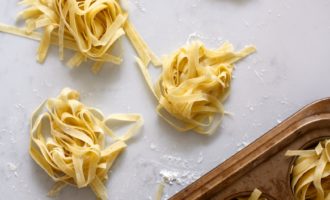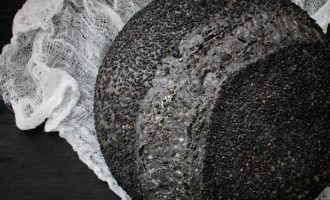Dashi (two ways)
Dashi is a Japanese stock, usually made with dried bonito flakes (but I have a vegan version for you, too), that is used pretty much everywhere in Japanese cuisine. And making it from scratch is so easy, it’s not worth buying the powdered stuff ever again.
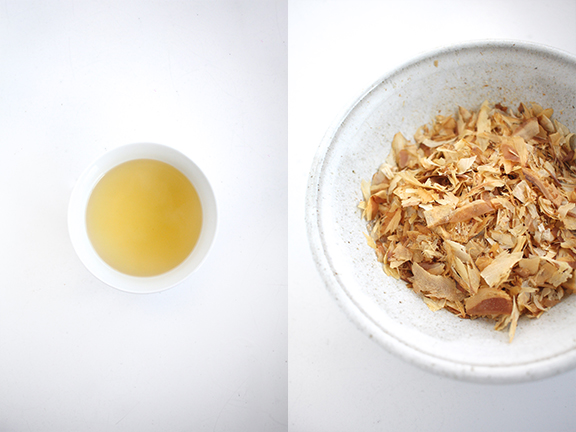
Growing up in Japan with a Japanese mother meant we ate Japanese food a lot. And I can say first hand that one of the most important ingredients in the cuisine is dashi. Dashi is essentially just broth, but it’s so far from the European tradition that it deserves it’s own post here. You know the food-trendy term “umami”? Well, it was a term coined by Ikeda Kikunae, who was a Japanese chemist who discovered this fifth taste while sipping on some dashi. It’s that important, folks!
It’s often made with dried bonito (a relative to tuna) flakes and kombu, but I’m going to teach you two ways to make it today: the traditional method and a vegan-friendly variation. But first, let’s talk kombu.
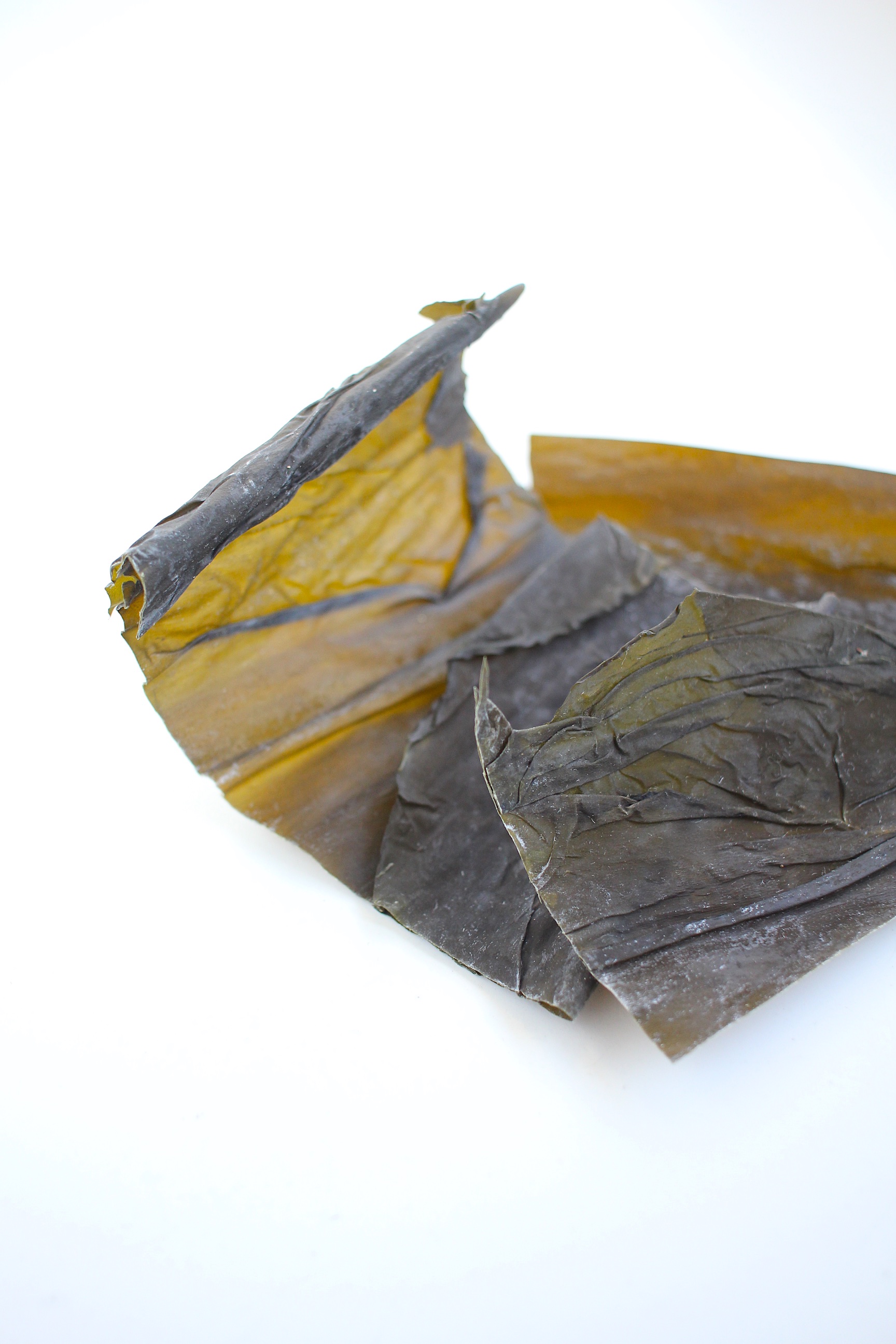
Kombu is a type of sea vegetable and is a powerhouse of awesome. First of all, kombu is an excellent source of calcium, iron, iodine, and has detoxifying, alkalizing, and blood purifying properties. It’s also high in glutamic acid (a.k.a. glutamates, not to be mistaken with artificial monosodium glutamate–MSG–which mimics naturally occurring glutamic acid), which is what gives food that umami flavor I mentioned before. So even if you think you don’t like anything that comes from the sea, give it a chance. It’s not fishy at all, but does have a subtle oceany, briney flavor that is really essential to a good dashi. And my favorite thing, it’s high in phytase, the enzyme that breaks down phytic acid. Which is why I add it to my beans when I’m soaking and cooking. (If you don’t know about phytic acid and why we need to avoid it, refer back to my post here)
As I mentioned before, dashi is traditionally made with bonito flakes and kombu. But unlike Western stock, this is so simple and quick to make, it barely takes longer than adding dashi powder (full of MSG and other additives, so let’s stay away from that) to hot water. You basically just heat up the ingredients until just before boiling, steep for a couple of minutes, then strain out the solids. And to make it even more wonderful, you can get a second batch out of the solids you just strained. Though this, what we call “second dashi”, is going to turn out less clear and to the purist, the flavor will be slightly inferior. So I reserve the second dashi for dishes where it’ll be combined with more bold flavors. For clear broth soups and other delicate dishes, I stick with the first dashi.
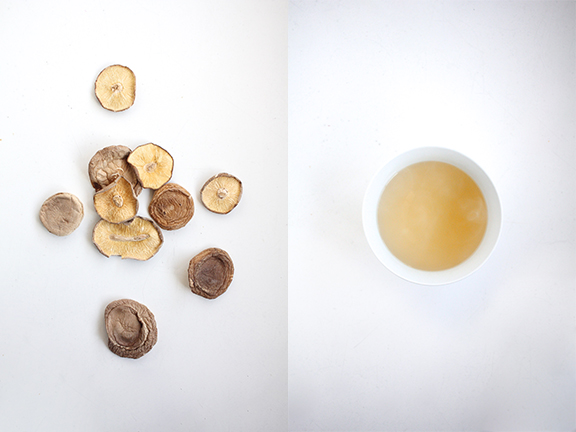
For my vegan dashi, I use dried shiitake mushrooms instead of the bonito flakes. Of course this results in a very different flavor, but it is still interchangeable with the traditional version. This dashi takes a little bit longer to make as you want to simmer the mushrooms long enough to extract as much flavor into the broth as possible, but it’s still a minimal time commitment. Unfortunately with the mushrooms dashi, you can’t make a second batch with the already-used shiitake. But the bonus is that you get to slice them up and use them in your miso soup or whatever other plans you have for it, so it’s less waste. You can actually even slice up the kombu and still eat it. It’s an acquired taste, but not at all uncommon. I alternate between the two types of dashi when cooking for my family, and use them both often. And if you love Japanese food half as much as I do, you’ll be making it often, too.


- One approximately 4x4 inch square of kombu (do not wipe off the white powder on the surface)
- 2 cups dried bonito flakes
- 9 cups filtered water, separated
- In a medium saucepan, place the kombu and bonito flakes. Add 4.5 cups water, and heat until just before a boil. Remove the kombu and set aside. Bring the remaining bonito flakes and water to a boil and immediately turn off the heat and let the flakes steep for 2 minutes. Pour the stock through a fine mesh strainer lined with cheesecloth, fine muslin, or a coffee filter. Do not press down on the flakes.
- For second dashi, add the remaining water, used kombu and bonito flakes back to the sauce pan and bring to a boil. Lower the heat to low and simmer for 10 minutes. Strain the liquid through a fine mesh strainer lined with cheesecloth, fine muslin, or a coffee filter, discarding the solids this time.
- You can store dashi in the refrigerator for up to two days or freeze for up to a month. Freezing isn't ideal as it diminishes the prized aroma of fresh, homemade dashi, but in the case of surplus, it's not a bad option. Once frozen, it's best to use in dishes with bolder flavors as you would use the second dashi.
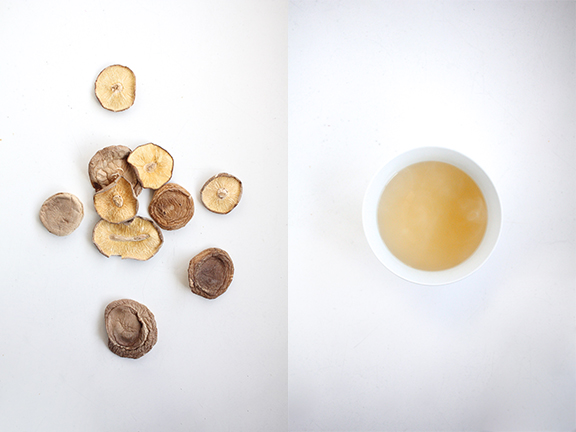

- One approximately 4x4 inch square of kombu (do not wipe off the white powder on the surface)
- 6~8 dried shiitake caps
- 9 cups filtered water, separated
- In a medium saucepan, place the kombu and dried shiitake. Add 4.5 cups water, and heat until just before a boil. Discard the kombu or reserve for another use. Continue to simmer the mushrooms and water for 10 minutes. Remove the shiitake and set aside*
- *you can still use the simmer mushrooms by slicing thinly and adding them to soups and other dishes.
- You can store dashi in the refrigerator for up to two days or freeze for up to a month. Freezing isn't ideal as it diminishes the prized aroma of fresh, homemade dashi, but in the case of surplus, it's not a bad option. Once frozen, it's best to use in dishes with bolder flavors as you would use the second dashi.
Comments
- Traditional Miso Soup - Scratch Eats - […] soup is made of 2 parts: miso and dashi. From there it gets interesting and individualized. My go-to miso…
- Soba and Vegetable bowls (vegetarian/vegan variations) - Scratch Eats - […] with soba you tend to go a little less sweet. It’s usually made with a combination of dashi (Japanese stock),…
- Somen + Mint Salad with Ponzu Dressing - Scratch Eats - […] have it’s own nuances that can’t be mimicked. And it’s also made with chilled dashi. And as far as…
- Homemade Kewpie Mayonnaise - Scratch Eats - […] for my omitting MSG. And the obvious choice was dashi. I have a basic dashi recipe on my blog…


